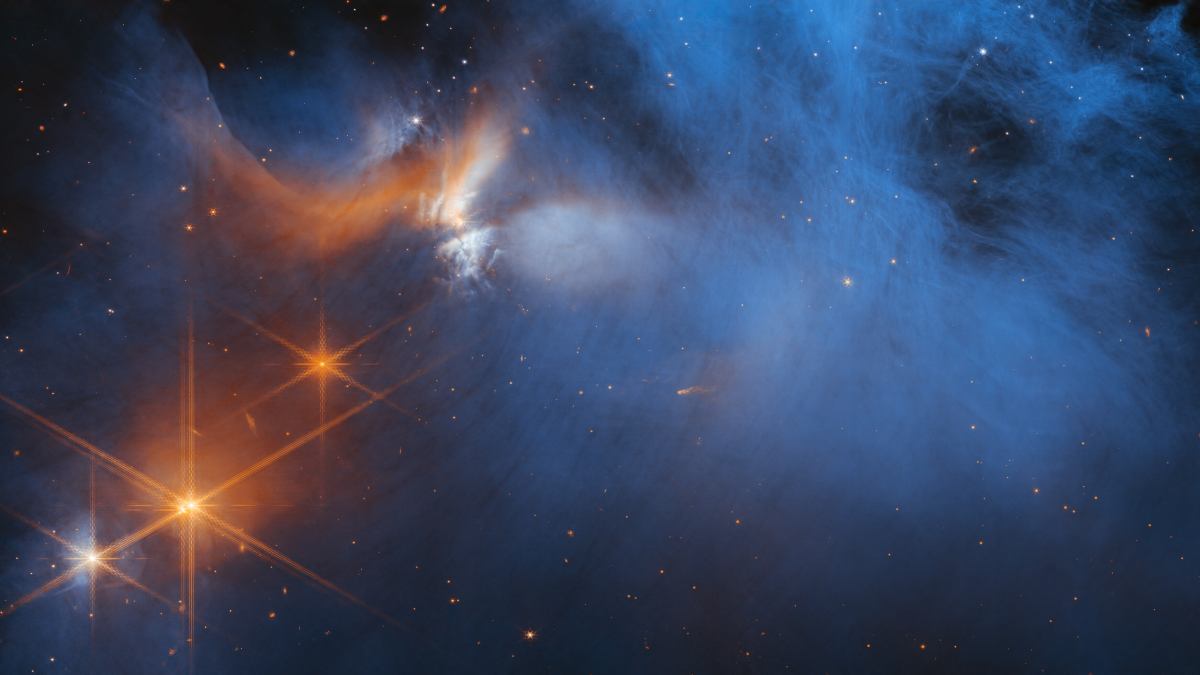Deep in the cold heart of an interstellar cloud, astronomers have discovered an array of primordial ices frozen onto dust grains. The cloud is currently forming new stars and planetary systems, and these ices, which include some unexpected complex organic molecules, are known to be the building blocks of stars, planets, and possibly life.
“We want to know what’s in planets, both in terms of their interiors and the atmospheres,” said Melissa McClure, an astronomer at Leiden University in the Netherlands and lead researcher on the discovery. Astronomers want to understand when ices such as water, carbon dioxide, and methane are injected into young planetary systems, and this new study shows that the process can happen early in a prestellar cloud.
Ices in the Chameleon
Interstellar molecular clouds are where stars and their planetary systems form—our Sun started in one, too. All the components for making planets can be found in these clouds, but it’s been unclear when during that process ices develop and get mixed in with other potentially planet-forming material.
“Think shadow puppets.…Background stars are like the flashlights, and the dust grains are like your hand.”
If these ices exist before stars take shape, they would form in the cold, dusty centers of molecular clouds—the surface of a dust grain provides a meeting ground for gaseous molecules, while cold conditions slow down the molecules enough to form a solid. The innermost reaches of Chameleon I, the cloud studied by McClure and her colleagues, are just 10°C above absolute zero.
“We detect the ices by looking at stars that are located behind the molecular cloud,” McClure explained. “Think shadow puppets. You’re putting your hand in between the flashlight and the wall, and then you see the shadow on the wall being cast by your hand. These background stars are like the flashlights, and the dust grains are like your hand.” A telescope—in this case the James Webb Space Telescope (JWST)—measures the shadow that the icy dust grains cast, revealing their composition.
“You can have a very diverse ice matrix…already at this molecular cloud stage.”
Using JWST’s mid- and near-infrared instruments, the scientists measured the chemical fingerprints of ices in the deepest, coldest part of Chameleon I. The area, 626 light-years from Earth, is backlit by two protostars still embedded in the cloud—the flashlights. The team’s measurements revealed nine simple ices, including water, methane, ammonia, and sulfur dioxide. The scientists also discovered the complex organic molecule methanol and dusty silicates deep within the cloud.
Some of these ices, including water, had been measured in Chameleon I before, but the team also spotted the fingerprints of complex organic molecules that might be ethanol or acetaldehyde, McClure said. “We weren’t sure whether we would see those or not, and the fact that we do suggests that actually, you can have a very diverse ice matrix…already at this molecular cloud stage.” The scientists published these results in Nature Astronomy on 23 January.
Solving an Icy Puzzle
Not only did the researchers detect these ices, but they were also able to measure their abundances in greater detail than ever before. These observations show that between 2% and 19% of the carbon, hydrogen, oxygen, nitrogen, and sulfur in Chameleon I is frozen and stuck to dust, whereas the remainder is likely still in a gaseous state. This result helps answer the question of when certain ices become available to form stars and planets: A lot of ice is available right from the start.
McClure and her team of ice age astrochemists, including scientists who conduct laboratory experiments and create chemical models that help decode observations, will continue to sift through the wealth of existing JWST data on Chameleon I and will be obtaining new observations of the cloud this summer to study ices during different stages in star and planet formation.
These observations reveal a little of how the ices may form on the surfaces of dust grains.
From both ground-based observations and space telescopes, “we learned that water was the most abundant ice and other key species were present, such as carbon monoxide and carbon dioxide,” said Ted Bergin, an astrochemist at the University of Michigan in Ann Arbor who was not involved with this research. “What these spectacular—and they are just fantastic—observations do is they allow us to look back in time and ask, Where did that water come from?…The earliest phases of stellar birth are an important piece of this puzzle.”
These new observations also illuminate more of the fine details of the ices and reveal a little of how they may form on the surfaces of dust grains, Bergin added. “Super cool stuff!”
—Kimberly M. S. Cartier (@AstroKimCartier), Staff Writer

